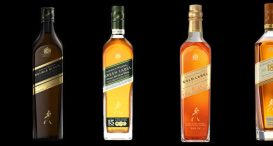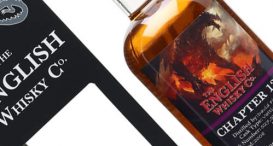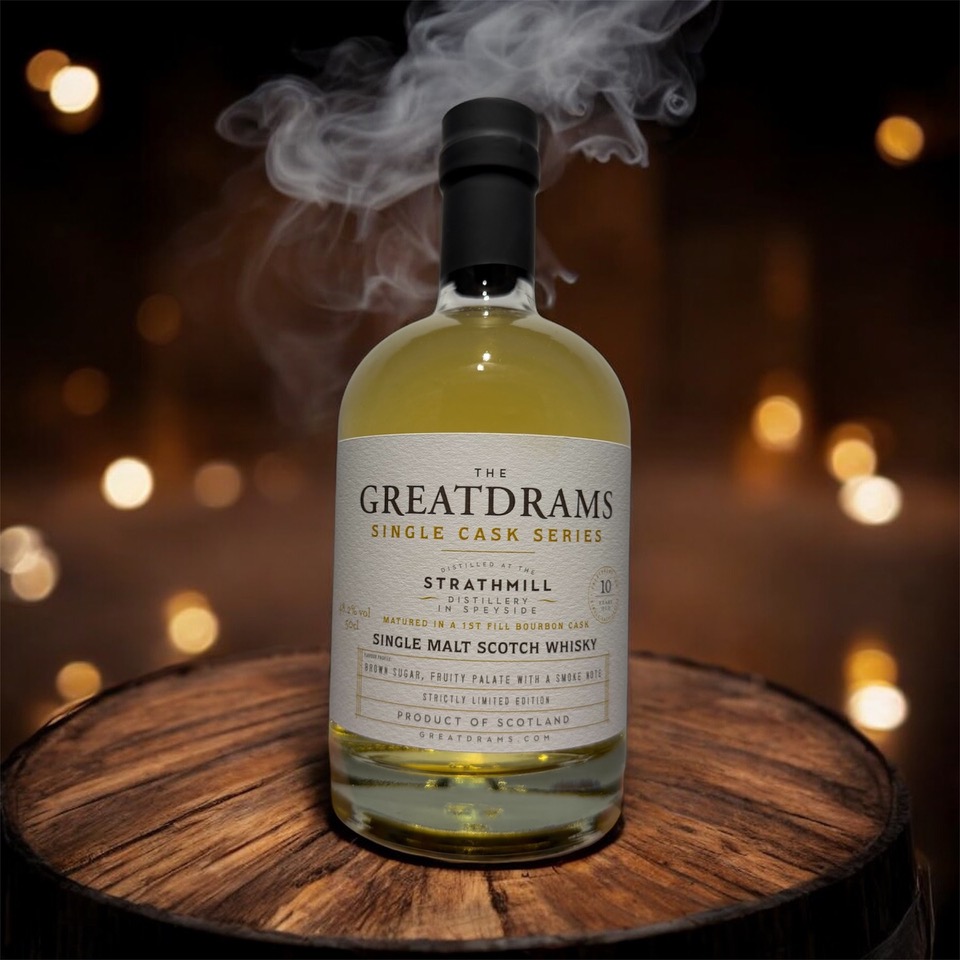Press release: Ardbeg’s Pioneering World First Space Experiment Reveals a New Taste Dimension
let’s begin
--- Ardbeg’s research may also signal a way for whisky industry experts to build a database of ageing whiskies ---
The results of Ardbeg’s pioneering space mission, released this week (7 September), in which the Distillery became the first ever to send spirit into orbit, have far-reaching implications for the unorthodox single malt – and perhaps for the entire whisky industry, experts say.
Nearly four years ago, Ardbeg distillate was sent into space as part of an experiment to investigate how micro-gravity (near zero gravity) would affect the behaviour of terpenes, the building blocks of flavour for many foods and wines as well as whisky spirits. This maturation experiment was undertaken as research into terpenes in micro-gravity was limited. Its findings, (revealed this week), are groundbreaking. They pave the way for unprecedented flavour profiles, particularly for Ardbeg, the world’s peatiest, smokiest, Islay Single Malt Scotch Whisky.

The experiment began in October 2011, when vials containing Ardbeg new-make spirit distillate and shards of Ardbeg casks, were sent to the U.S. National Lab on the International Space Station by the Distillery’s partner, U.S. space research company NanoRacks LLC. Some 200 miles above Earth, the vials orbited the planet at 17,227 miles per hour, for almost three years.Following their return to Earth, the samples were analysed alongside control samples that had been kept at the Ardbeg Distillery by Dr Bill Lumsden, Ardbeg’s Director of Distilling and Whisky Creation, independent whisky experts and scientists.
In three of the four stages of analysis, major differences were identified between the two sets of samples. Dr Bill said: “The space samples were noticeably different. When I nosed and tasted the space samples, it became clear that much more of Ardbeg’s smoky, phenolic character shone through – to reveal a different set of smoky flavours which I have not encountered here on earth before.”
Dr Bill added: “Ardbeg already has a complex character, but the results of our experiment show that there is potentially even more complexity that we can uncover, to reveal a different side to the whisky.”
Further analysis, looking at ratios of different types of wood extractive compounds, found significant differences between the two sets of samples – demonstrating that gravity has a very real effect on the maturation of spirit. Dr Bill commented “Our findings may also one day have significant implications for the whisky industry as a whole. In the future, the altered range of wood extractions could lead scientists to be able to detail the ratios of compounds expected in whiskies of a certain age.”
Jeffrey Manber, CEO of NanoRacks who partnered with Ardbeg on this experiment, commented: “It’s hard to find companies willing to be pioneers… To have a partner like Ardbeg that is willing to make this sort of commitment augurs well for the future of commercial space research into flavourings and what it changes for consumer products in general.”
Ardbeg would like to thank NASA and the Space Station Program for allowing this experiment to be undertaken.
To celebrate the results being published, the Distillery this month (12 September) releases the final bottling of Ardbeg Supernova to its loyal following, the Ardbeg Committee. Ardbeg Supernova 2015 contains the most highly peated Ardbeg, providing an intensity reminiscent of the exploding star after which it is named.
The four-stage analysis and its findings
1) Organoleptic assessment
Nosing and tasting
Dr Bill’s analysis established that much more of Ardbeg’s smoky, phenolic character shone through in the space samples than in the Earth samples.
Tasting notes:
Earth sample: The sample had a woody aroma, reminiscent of an aged Ardbeg style, with hints of cedar, sweet smoke and aged balsamic vinegar, as well as raisins, treacle toffee, vanilla and burnt oranges. On the palate, its woody, balsamic flavours shone through, along with a distant fruitiness, some charcoal and antiseptic notes, leading to a long, lingering aftertaste, with flavours of gentle smoke, tar and creamy fudge.
Space sample: Its intense aroma had hints of antiseptic smoke, rubber and smoked fish, along with a curious, perfumed note, like violet or cassis, and powerful woody tones, leading to a meaty aroma. The taste was very focused, with smoked fruits such as prunes, raisins, sugared plums and cherries, earthy peat smoke, peppermint, aniseed, cinnamon and smoked bacon or hickory-smoked ham. The aftertaste is intense and long, with hints of wood, antiseptic lozenges and rubbery smoke.
2) Gas chromatography (GC)
Measures key volatile compounds of alcohols, aldehydes, ketones and fatty acid esters
Dr Bill established that levels of these compounds were the same in both sets of samples – as expected.
3) Gas chromatography-mass spectrometry (GCMS)
A more advanced version of gas chromatography
Independent analysis found that one compound (a phenolic compound – one of the more flavour-active compounds) was significantly different in the samples – far lower in the space samples than in the Earth samples.
4) High pressure liquid chromatography (HPLC)
Used to establish the impact of maturation on spirit, it measures phenolic compounds and wood extractives. The wood extractive compounds measured are split into those which are easily extracted from wood and those which are less easily extracted.
The results of this analysis found that among the wood extractive compounds, the ratio of these two types of compounds was very different in the two set of samples – with much fewer of the less-easily-extracted compounds found in the space samples. This indicates that micro-gravity either inhibits the release of these compounds, or prevents as much of the liquid coming into contact with them to withdraw the compounds.
NanoRacks LLC:
Ardbeg is proud of its dynamic partnership with the U.S. space research company NanoRacks. Founded in 2009, in Houston, Texas, the company was the first to market its own hardware and services onboard the International Space Station. It provides a commercial pathway to using the Station. Clients have included NASA, the German Space Agency, consumer companies and a variety of schools and universities.
Ardbeg Supernova 2015 Tasting Notes:
Ardbeg Supernova 2015 is non chill-filtered and bottled at 54.3% ABV.
Ardbeg Supernova 2015 is a limited-edition, pale gold single malt. The fifth and final bottling of Ardbeg Supernova has a peppery nose, with aromatic herbs, leading to scents of smoked fruits, seaweed and fennel. At 100 phenol parts per million (rather than Ardbeg’s usual 55ppm), its peatiness is unmistakable, with blasts of spice, salted caramel and smoke mingling with medicinal notes, dark tar and chilli spice, finishing in a long, peppery aftertaste.
It will be available exclusively to the Ardbeg Committee from 12th September.
RRP: £124.99












